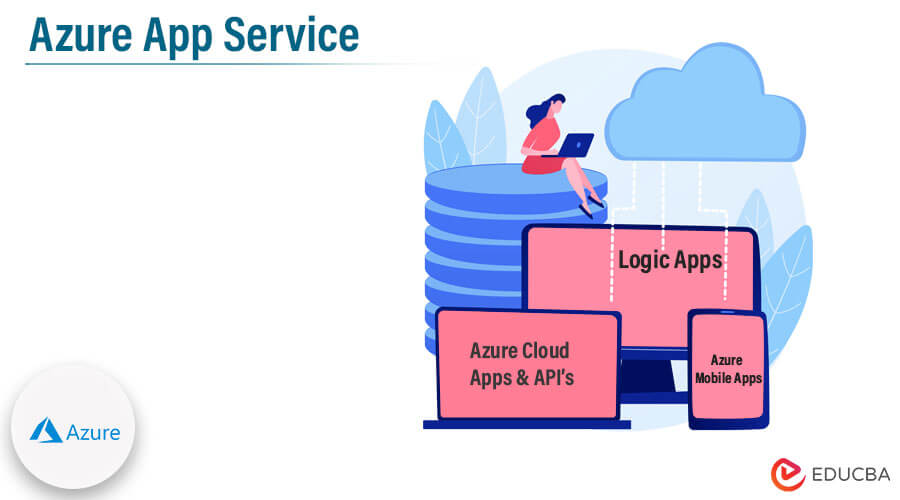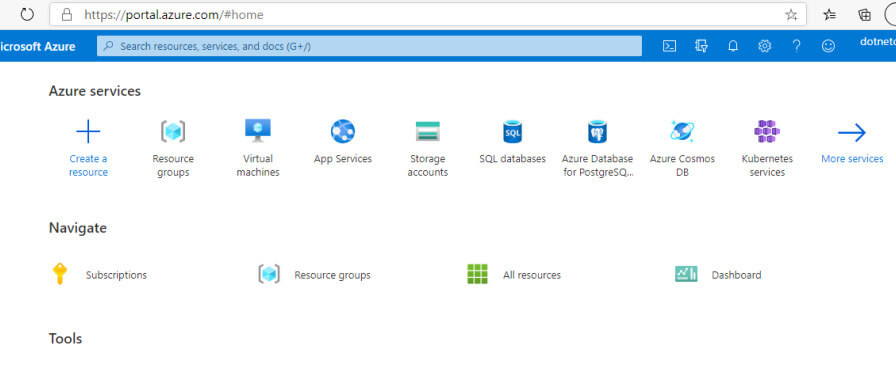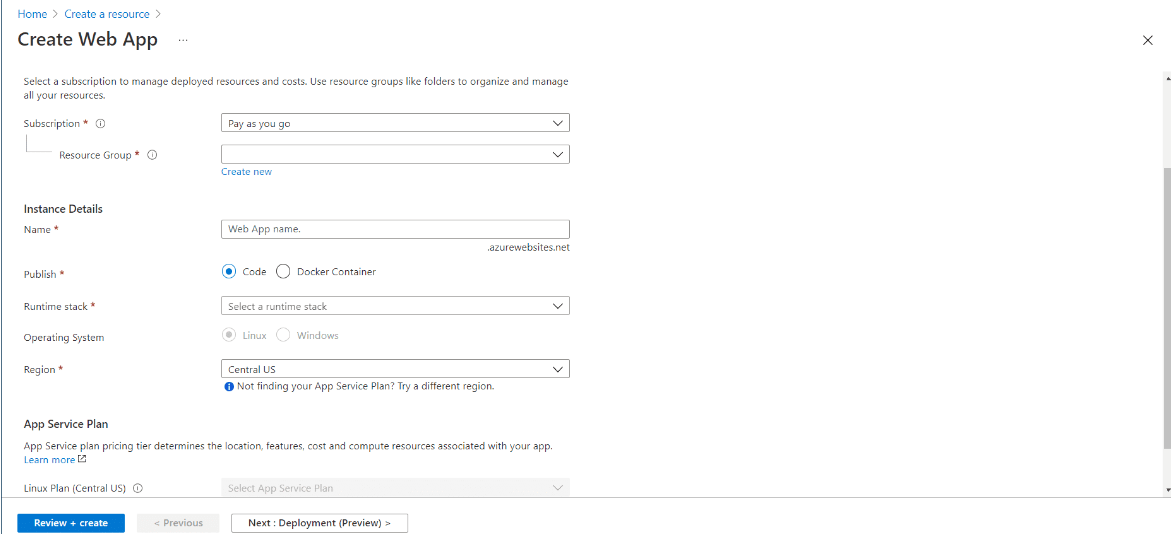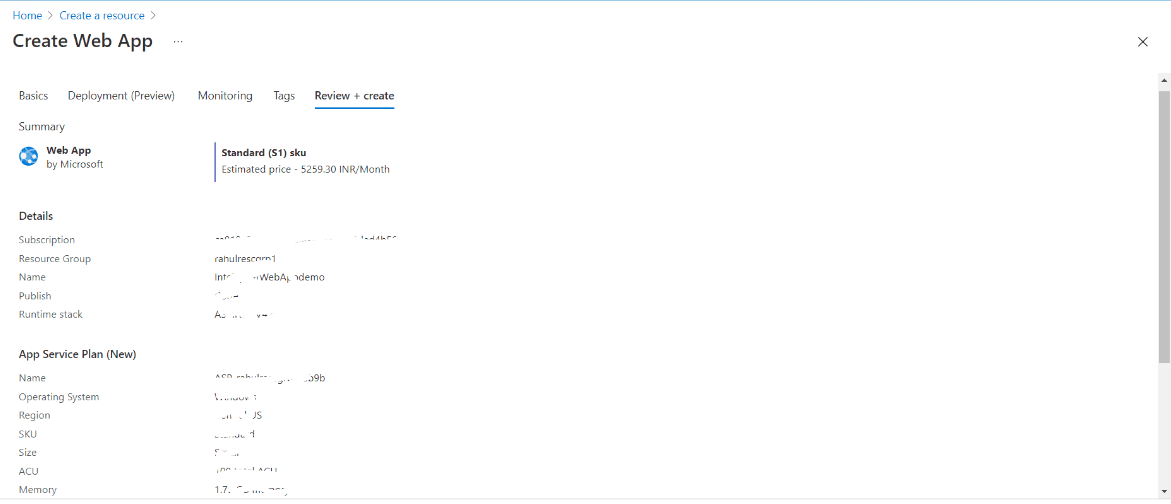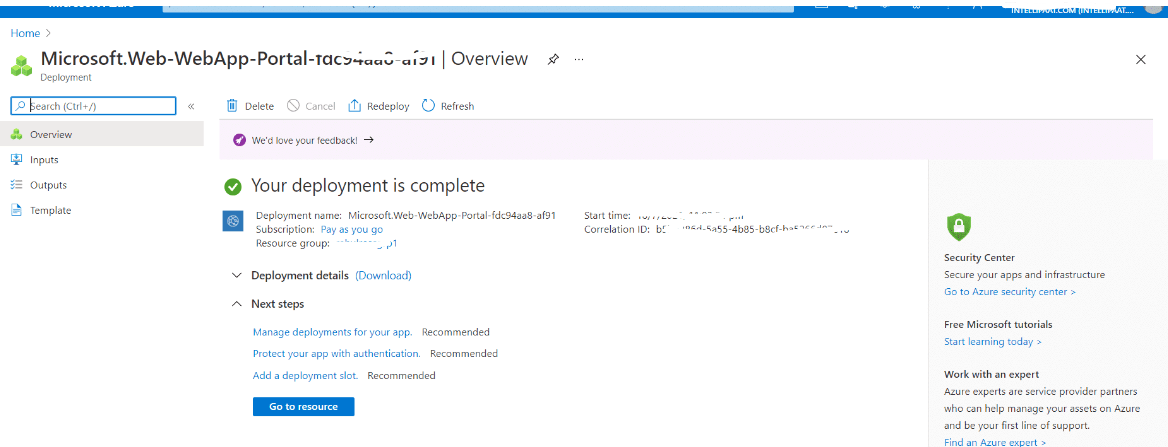Updated May 15, 2023
What is Azure App Service
Azure App Service is HTTP based service that hosts web applications, mobile backends, and REST API’s in the programming language of the user’s choice. Azure App Service also offers high availability and auto-scaling, supporting both Linux and Windows with automated deployments from Azure DevOps, Github, or any Git repo. Here, we shall learn about Azure App Service and its Cloud Application and API’s along with the logic and features of App Service. It will also give a clear understanding of the Azure App Service environment.
Key Takeaways
- Azure is used to host entire infrastructure, websites, and SQL databases to various cloud services.
- With Azure App Service, the user pays for Azure compute resources that are used. Compute resources used are determined by App Service Plan that runs applications on.
- It has a lot of features like Containerization, DevOps Optimization, Security Compliance, API and Mobile features with Serverless code, etc.
- Azure also offers services that are used for hosting web applications and websites.
- Apart from the positives and listed features, it also has a few limitations that one has to know about.
- Azure portal shows features that work on Linux currently, also, App Service is not supported on Shared pricing.
Azure App Service Developers
Azure App Service provides a hosting service that developers use to develop web applications or mobile applications. Developers can also use it to build API or Logic applications that provide integration with SaaS. It replaces several Azure services that, include Azure Mobile Services, Azure Website, and Azure BizTalk Services, and gives the user a single product called Azure App Service.
Azure App Service has a huge lot of features like Security, auto-scaling, load balancing, and automated management of the applications. App Service also has a DevOps feature that provides continuous deployment via GitHub, Azure DevOps, Docker hub and other sources, staging environment, TLS or SSL certificates, and custom domains.
It has two hosting environments, App Service Plan and the App Service Environment. The latter is a much more sophisticated version of the App Service Plan with a lot more features compared to the App Service Plan. One can host several applications like web jobs, web applications, APIs, batches, and mobile backend services, which can be consumed from Mobile Front End.
To have communication among applications in App Service Plan and the applications installed on Virtual Machines within Virtual Network, there are two ways. One is to establish Point to Site VPN among apps in the App Service Plan and the Virtual Network via which applications can communicate.
And the other way is if the user has App Service Environment, as it gets deployed into the Virtual Machine by itself. Applications within App Service Environment can communicate seamlessly with applications installed on a Virtual Machine within Virtual Network. Finally, security and monitoring to control and secure the App Service Environment are the two important things to remember.
Why Azure App Service?
Azure App Service is a fully managed PaaS – Platform as a Service for developers.
Here are a few points why one should use Azure App Service:
- Azure App Service automatically maintains and patches the OS and language frameworks for users.
- It has first-class support for Java, PHP, Ruby, ASP.NET Core, ASP.NET, or Python.
- It helps to set up continuous integration and deployment with Github, BitBucket, Azure DevOps, Azure Container Registry, and Docker Hub. It also promotes updates through staging and test environments.
- It dockerizes the application and hosts a custom Linux or Windows container in App Service.
- Azure App Service patches and maintains OS Frameworks automatically for the user.
- It is secure and compliant with high availability.
- It also has Serverless code with API and mobile features.
Azure Web App – Deploying on Azure
Start with Sign Up to Azure Portal or log in to https://portal.azure.com/#home
Users can deploy web apps using the below methods.
- Copying the files manually with FTP.
- Synchronizing the files and folders to the App Service from a cloud storage service, like DropBox or OneDrive.
Step 1: Log in to the Azure portal – Click on Create a resource.
Step 2: Then click on Web App to create a new Web app resource. Enter name, app service plan; resource group should be filled. Also, select the Subscription type and the resource group if it already exists or create a new resource group. Once all the details are filled in as per requirement, click Review+Create.
Once created, review and give create.
Step 3: It will start deploying Web App resources, and once completed, the portal will look as below.
Click on Go to resource, and click on Web app created. In the Deployment section, select QuickStart and click on the deployment of choice.
Azure Cloud Apps & APIs
Building web-based and cloud-based applications while using many programming languages that support simplified management of applications with the cloud services, ensuring higher availability. Users should Scale the environment automatically basis on demand, which reduces cost and automates the operating system and application updates to increase security.
Azure Cloud applications redirect the traffic from troublesome instances to healthier ones, running smoothly. Once applications are deployed, Azure takes care of the other processes, be it provisioning or load balancing.
In building Cloud Apps and APIs, the user brings code or the container using the framework language of choice. Also increases developer productivity by integrating Visual Studio and Visual Studio Code. It runs on Kubernetes across Azure anywhere, on-premise, and CNCF conformant Kubernetes cluster through the Azure Arc. It also reduces downtime and minimizes the risk of application updates by using deployment slots. Azure Cloud Apps streamline CI/CD with Github, Git, Github Actions, Azure DevOps, Atlassian BitBucket, Docker Hub, and the Azure Container Registry.
Azure Mobile Apps
It provides a platform for building mobile applications like accessing and storing data. Azure Mobile Apps help the developers to tackle the challenging requirements in modern mobile device applications that include:
- Incorporating the business logic.
- Receiving notifications based on custom-defined events.
- Accessing and storing structured data.
- Authorizing and authenticating the users based on Twitter, Microsoft, and Facebook accounts.
Azure App Service for Mobile Apps also allows developers to build cross-platform applications that run on iOS, Windows, or Android, similar to GitHub or AWS Amplify. Such applications operate exclusively in the cloud or connect with users’ on-premise infrastructure to perform authentication. These mobile applications also benefit from build in push notifications that send personalized push notifications to any mobile.
Logic Apps
Azure Logical applications automate the business process by linking cloud-based applications like Google Services, Salesforce, and Office 365. With the Logic feature, users can use Visual Designer to combine the connectors that are available from the Azure Marketplace for integration scenarios.
Azure Logic apps use a workflow engine to implement the business process that is designed and relies on the connectors for providing user access. Every step in the workflow is an action that accesses data through the connector.
Azure App Service Features
Given below are the features mentioned:
- File Access: We have two types of drives, i.e., the Local Drive and the Network Drive.
- Local Drives comprise of User Drive i.e., the C Drive, and the Operating System Drive i.e., the D Drive.
- Every customer’s subscription has a reserved directory structure on a specific UNC share within the data center.
- Development Frameworks: Azure App Service supports various development frameworks that include ASP.NET, NodeJS, PHP, Python, and Classic ASP that run as extensions within ISS.
- Network Access: Application code uses TCP or IP and UDP-based protocol to make outbound network connections to access Internet endpoints that expose external services.
Conclusion
We have come to the end of the topic “Azure App Service.” This concept has given us an overview of Azure and its App Services, its features, limitations, etc. Out of many services, we have seen the Logic apps, Mobile apps, Cloud apps, and its APIs. The complete concept explained theoretically will help to get a crisp and clear understanding of what Azure App Service is and how it is useful to develop applications and websites collaboratively.
Recommended Articles
This is a guide to Azure App Service. Here we discuss the introduction of the azure web app – deploying on Azure, logic apps, and features. You can also look at the following articles to learn more –
